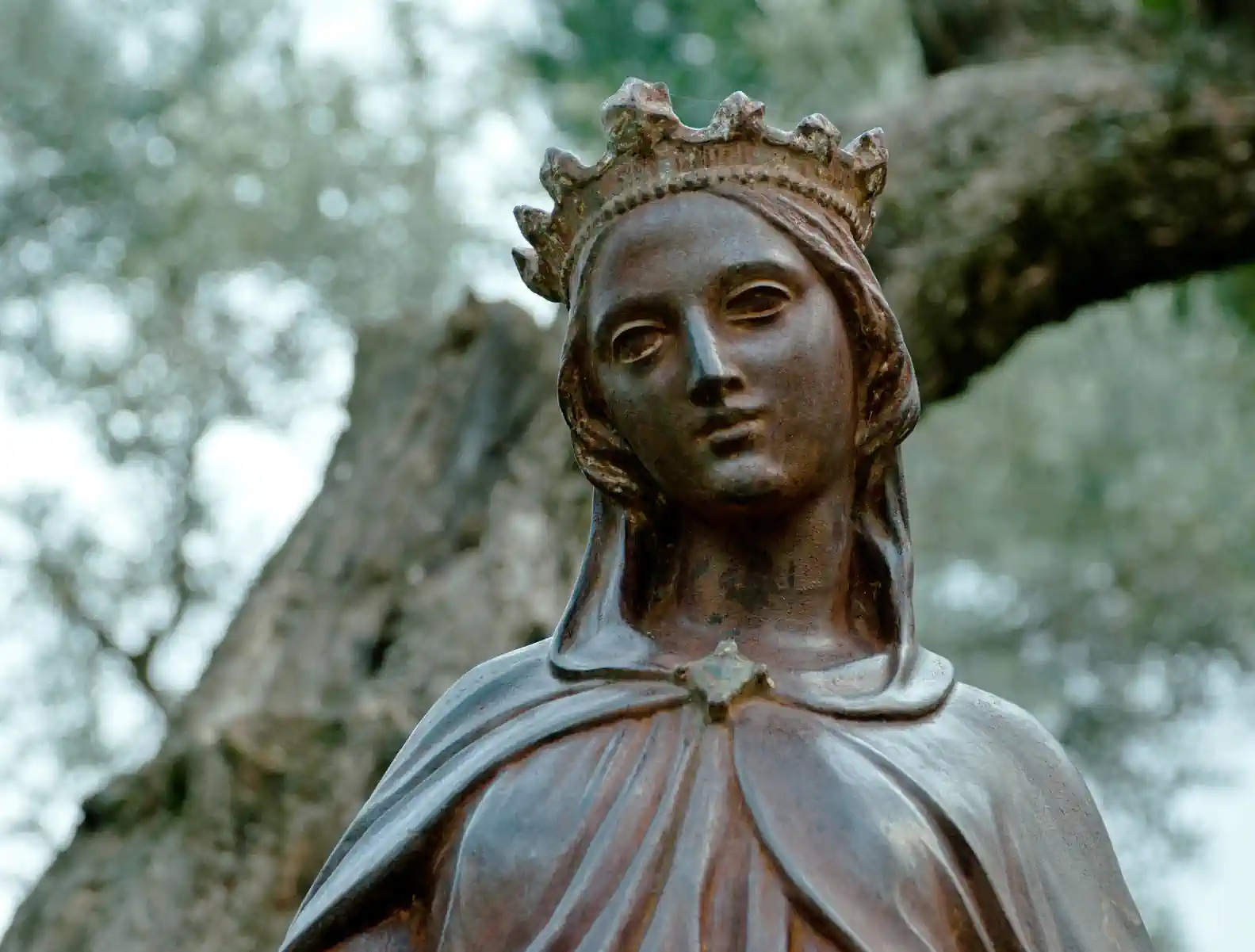House of the Virgin Mary
"If you ever feel distressed during your day, call upon our Lady, just say this simple prayer: Mary, Mother of Jesus, please be a mother to me now. I must admit, this prayer has never failed me."
- Blessed Mother Teresa
For detailed information about points of interest, activities and events related to Ephesus in Turkey, visit:

Distilled Information
House of the Virgin Mary
One Sentence Review
An ancient house that was discovered following the visions of a paralyzed German nun, truly a place of holy presence.
Ticket Price
500 Turkish Liras (updated 2025)
Location
Private vehicle or taxi needed to reach the house as it's almost at the top of a hill.
Accessibility
There are some steep ramps to reach the front of the house. The interior of the house is not designed for wheelchairs.
The House of the Virgin Mary in Ephesus
The House of the Virgin Mary, located on a mountain near Ephesus, where the Virgin Mary is believed to have spent her final years. The site holds deep spiritual importance for both Christians and Muslims and has been visited by several Popes. Surrounded by peaceful forest, the site includes the chapel, a prayer wall where visitors leave written wishes, and a spring believed to have healing properties. It is a place of quiet reflection and pilgrimage.
Discovery, History, and Significance of the House of The Virgin Mary
The House of the Virgin Mary, located on Mount Koressos near the ancient city of Ephesus in modern-day Turkey, is a site of religious pilgrimage and historical interest. Believed by many to be the final home of Mary, the mother of Jesus, the small stone house has attracted pilgrims from around the world, including multiple popes. Its discovery, connected to the visions of a 19th-century German nun, has been the subject of both devotion and historical inquiry.
Discovery and the Visions of Anne Catherine Emmerich
The rediscovery of the House of the Virgin Mary is primarily attributed to the mystical visions of Anne Catherine Emmerich, an Augustinian nun and mystic from Germany. Though Emmerich had never visited the Holy Land, she described in detail the house where she believed Mary had lived and died. These visions were recorded by the German poet Clemens Brentano, who later published them in a book titled The Life of the Blessed Virgin Mary (1852).
Based on Emmerich's detailed descriptions—including the topography, layout, and orientation of the house—a French priest, Abbé Julien Gouyet, traveled to Ephesus in 1881. He identified a small stone building that matched her vision near the summit of Mount Koressos, about 7 km from Selçuk. His findings were initially ignored. However, a second expedition in 1891 by Lazarist missionaries confirmed the site, and it was declared a place of pilgrimage.
Historical Context and Plausibility
The belief that Mary lived in Ephesus stems from the New Testament account of Jesus entrusting Mary to St. John the Evangelist during his crucifixion (John 19:26-27). Tradition holds that St. John took Mary with him during his missionary work and settled in Ephesus, where he later wrote his Gospel and letters.
This makes it plausible that Mary may have lived out her final years in this region, though no definitive archaeological evidence confirms this. The Acts of the Apostles documents the missionary efforts of St. Paul in Ephesus as well. Paul spent over two years in the city, establishing a strong Christian community. Although there's no record of him meeting Mary, his presence reinforces Ephesus's importance in early Christianity.
Despite the lack of concrete proof that Mary physically lived in this house, the historical tradition of John's presence in Ephesus lends credibility to the possibility that Mary may have been there with him.
The House of Virgin Mary Today
The structure today is a modest stone building that has been partially reconstructed. Archaeological examination confirms that parts of the foundation date back to the 1st century AD, though the upper sections are believed to have been added much later. The house consists of a single-room chapel, a small altar, and adjoining spaces, maintaining the simplicity that one might associate with Mary's humble lifestyle.
Outside, a wall is covered with hundreds of prayer notes left by pilgrims, and a sacred spring nearby is believed to have healing properties.
Current Management and Religious Significance
The House of the Virgin Mary is under the guardianship of the Franciscan order, who maintain the site, conduct Mass, and welcome pilgrims from all over the world. It is a rare place of shared veneration by both Catholics and Muslims, the latter recognizing Mary (Maryam) as the mother of the Prophet Isa (Jesus) in the Qur'an.
The site has been visited by multiple popes: Pope Paul VI in 1967, Pope John Paul II in 1979, and Pope Benedict XVI in 2006, each affirming its spiritual significance.
Got Questions?
We're here to help!
Frequenty Asked Questions
Is the House of the Virgin Mary officially recognized by the Church?
Though it is not a confirmed historical residence, the house has been visited by multiple Popes and is recognized as a place of spiritual importance.
Can people of all faiths visit the House of the Virgin Mary?
Absolutely. The site welcomes people of all religions and backgrounds. Many come for spiritual reasons, historical interest, or quiet reflection.
Where is the House of the Virgin Mary located?
It is located on Mount Bülbül, near the ancient city of Ephesus and the town of Selcuk in western Turkey.

